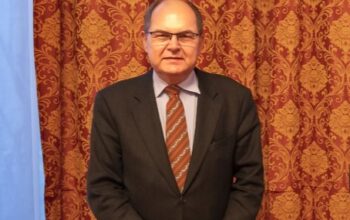The RS Government’s three overarching priorities for 2016 are government reform, economic growth, and security. Several of the various programs now underway related to the BiH application for EU membership are intended to encourage reform and economic growth. As EU, World Bank, IMF, and ERBD officials—among others—have publicly observed, cooperation of two entity governments, the Federation and RS, with each other and jointly with EU and international financial institutions has been good and is yielding positive results.
Unfortunately, reforms at the BiH level are proving much more difficult because major elements of the Bosniak political leadership continue to oppose basic and legally binding terms of the Dayton Peace Accords, which include the Constitution of BIH.
It is important to recognize that the Dayton Accords did more than end the war. Through its Annex 4—the BiH Constitution—and other provisions, the Dayton Accords provided for a sustainable political system for the state. That system is sustainable because it is built upon an understanding of BiH’s political realities, especially the presence of three Constituent Peoples—Serbs, Croats and Bosniaks—with great historical distrust for one another.
The Constitution deals with this fact in two primary ways. First, it assigns a small set of government competencies to the BiH level and explicitly allocates all other powers to the entities, thereby providing for extensive entity autonomy. Second, the Constitution provides structural and procedural protections in the BiH-level legislative, executive, and judicial institutions to prevent any one of the three Peoples from dominating the others. As subsequent articles will show, Bosniak political leaders and a number of the international High Representatives have worked to undermine these essential elements of constitutional government, notwithstanding their establishment as law by Dayton and the BiH Constitution.[1]
One of the most important participants in the Dayton peace process, former Swedish Foreign Minister Carl Bildt, explains why these structural features are central, in a recent essay published by the European Council on Foreign Relations:
Critics in later years have often attacked the fact that the constitutional settlement was based on ethnic and national groupings rather than on individuals and their rights. A unitary state, they claim, would have been both better and more democratic.
Such a solution sounds fine in theory, but the reality is that in states like these, the situation is rather different, and such solutions are easier talked about than achieved.
The constitutional settlement for Bosnia, agreed in Dayton, ended up somewhere between Belgium, with its complicated structure of Flemish, Walloon, and even some German “entities”, and Cyprus, only now coming close to overcoming the total breakdown of its constitutional order in 1966, with UN forces patrolling the “the green line” dividing Nicosia ever since.
Those who question Dayton for enshrining ethnic and national identities might be advised to try their hand at getting the Scots to accept total integration with England, or the Catalans or the Basques to merge with the rest of Spain. They might even try with Bavaria.[2]
Successful BiH-level reform to accelerate economic growth, provide stability and progress for the citizens of BIH, and facilitate the program for EU accession, must rest upon implementation of these fundamental elements of the Dayton Peace Accords and the Constitution: broad entity autonomy and rejection of a centralized state dominated by any one of the three Constituent Peoples.
[1] It was encouraging to read in a recent interview that the current High Representative looks forward to closure of his office under circumstances “…when we can say that BiH is irreversibly on the Euro-Atlantic road, as a single, stable, functional but decentralised state.”
[2] Bildt, Carl, Dayton Revisited: Bosnia’s Peace Deal 20 Years On. www.ecfr.eu (November 2015).


